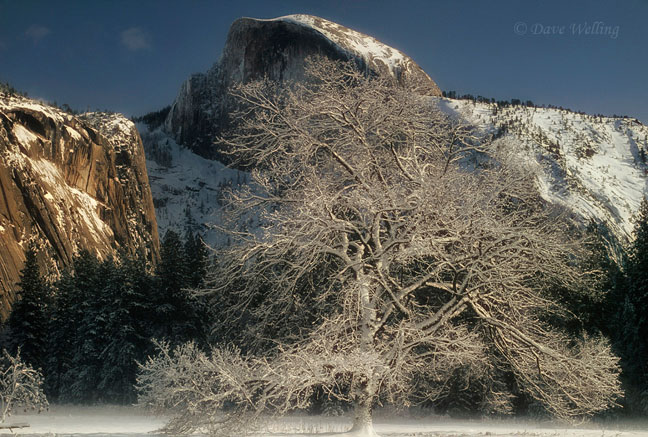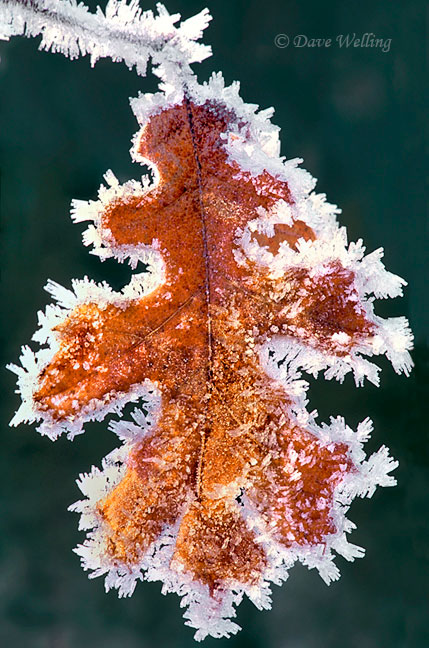You’ve found a beautiful landscape, captured a great image, and then pack up your gear and leave. Right? WRONG. Always be aware of what is around you! Especially those small, intimate scenes or subjects within the grand landscape that help tell the story of where you were.
This winter scene from Yosemite Valley takes in a number of major elements of the landscape, from the snow draped black oak to Half Dome in the background, which provides framing for the tree. After capturing this image, I stopped and looked more closely at what else was around me that I could photograph to capture an entirely different feeling yet still be in a winter theme.

Looking straight down, I found this image of a frost-covered bracken fern that helps provide insight into a tiny portion of the world that makes up this winter landscape in Yosemite. I switched lenses from my 28-70mm medium-telephoto zoom lens to my 105mm macro lens, adjusted my tripod to look straight down, and captured an entirely different image while standing in almost the exact same spot as when I took the snow-covered black oak and half dome image.

But I still wasn’t finished. After looking down and checking the area at my feet and nearby for interesting, intimate scenes, I stood up and did a 360 degree turn while studying the nearby surroundings for other opportunities.
That’s when I saw this black oak leaf hanging from another nearby tree. Although seemingly devoid of life, the leaf still clung tenaciously to its life giving tree. The spectacular rime ice crystals perfectly framed the leaf and set off the reddish brown color. I was about 6 feet away from the leaf so I could have switched back to my medium-telephoto zoom lens and captured the image from my same spot again. But, I opted to move much closer and photograph the leaf using my 200mm macro lens. By moving closer and using a long telephoto macro lens I was able to isolate and blur the background better and thus make the leaf stand alone as the subject of interest. Moving slightly also allowed me to eliminate several bright, white “hot spots” in the background which really detracted from an otherwise excellent intimate scenic.

Try this technique the next time you find that great, grand landscape. After you successfully capture your wide angle landscape, slow down, relax and look around you. Be attentive to small details, lines, shapes and lighting on the various elements around you. Look down, look around, look up. You might be surprised at what you find!
About the author: Dave Welling is a full time professional photographer specializing in wildlife, landscape and nature with over 75,000 6×7, 6×4.5, and 35mm film and digital images. He has been capturing evocative images of the natural world for over 25 years, producing the highest quality images for publication. His images often capture unique behavioral characteristics of wildlife or special lighting or weather conditions of landscapes. You can see more of his work at www.strikingnatureimagesbydavewelling.com.
Have something to add to the story? Leave a comment or email editor@outdoorphotographyguide.com.

Share tips, start a discussion or ask one of our experts or other students a question.
Already a member? Sign in
No Responses to “Don’t Pass By Those Great Intimate Scenics as You “Focus” on the Grand Landscape”